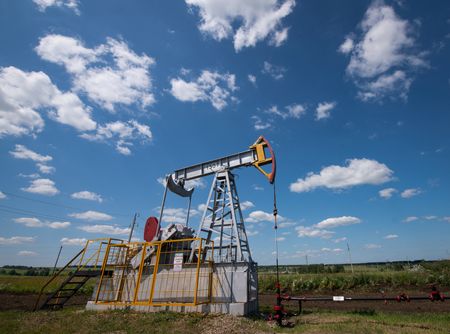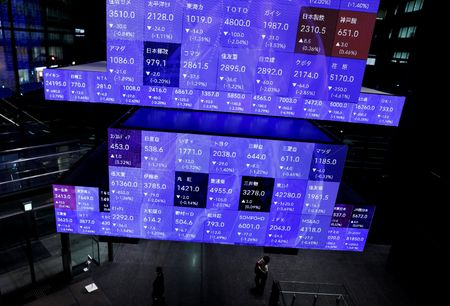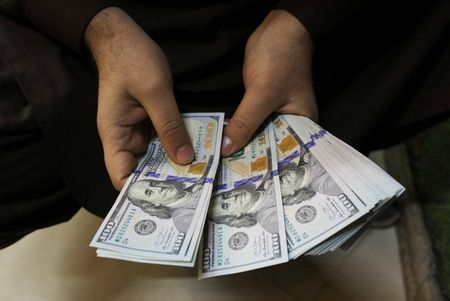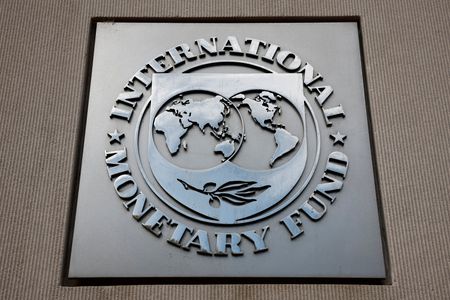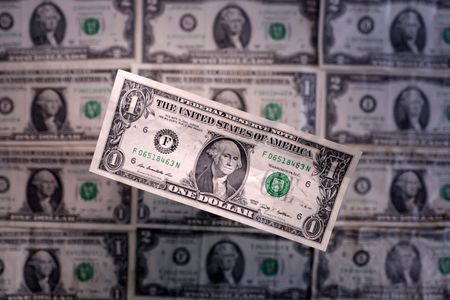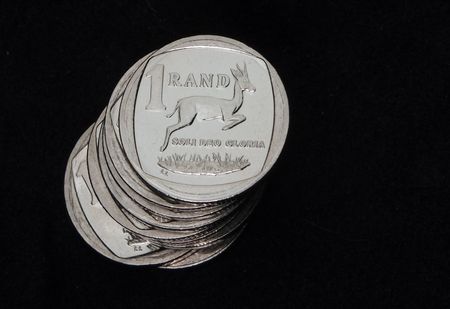By Arathy Somasekhar
HOUSTON (Reuters) -Oil prices settled 1% higher on Wednesday as investors focused on developments on U.S. President Donald Trump’s tighter deadline for Russia to end the war in Ukraine and his tariff threats to countries that trade its oil.
The Brent crude September contract, which was set to expire on Thursday, closed 73 cents, 1.01%, higher at $73.24. U.S. West Texas Intermediate crude was up 79 cents, or 1.14%, at $70, with investors largely shrugging off mixed U.S. data on crude and fuel inventories.
Both contracts had fallen nearly 1% earlier in the day.
The more active Brent October contract settled 79 cents, or 1.1% higher, at $72.47.
On Tuesday, Trump said he would start imposing measures on Russia, such as secondary tariffs of 100% on trading partners, if it did not make progress on ending the war in Ukraine within 10 to 12 days, moving up from an earlier 50-day deadline.
He imposed a 25% tariff on goods imported from India starting August 1, along with an unspecified penalty for buying Russian weapons and oil. The U.S. also warned China, the largest buyer of Russian oil, that it could face huge tariffs if it kept buying.
JP Morgan analysts wrote that while China was unlikely to comply with U.S. sanctions, India has signaled it would do so, which could affect 2.3 million barrels per day (bpd) of Russian oil exports.
“Traders seem more focused on the tariffs (related to Russia) and the compliance by India is being taken as a positive towards crude prices,” Dennis Kissler, senior vice president of trading at BOK Financial.
Meanwhile, U.S. crude inventories rose by 7.7 million barrels, the Energy Information Administration said, compared with analysts’ expectations in a Reuters poll for a 1.3 million-barrel draw.[EIA/S]
U.S. gasoline stocks fell by 2.7 million barrels, exceeding expectations for a 600,000-barrel draw. Distillate stockpiles, which include diesel and heating oil, rose by 3.6 million barrels, higher than forecasts for a 300,000-barrel build.
U.S. economic growth also rebounded more than expected in the second quarter, but that measurement grossly overstated the economy’s health as declining imports accounted for the bulk of the improvement and domestic demand increased at its slowest pace in 2-1/2 years.
The Federal Reserve held interest rates steady in a split decision that gave little indication of when borrowing costs might be lowered. Fed Chairman Jerome Powell also added it was too soon to say whether the central bank will cut its interest rate target in September, as financial markets expect.
(Reporting by Seher Dareen in LondonAdditional reporting by Mohi Narayan in New Delhi and Colleen Howe in Beijing;Editing by David Goodman, Emelia Sithole-Matarise, David Gregorio and Marguerita Choy)

